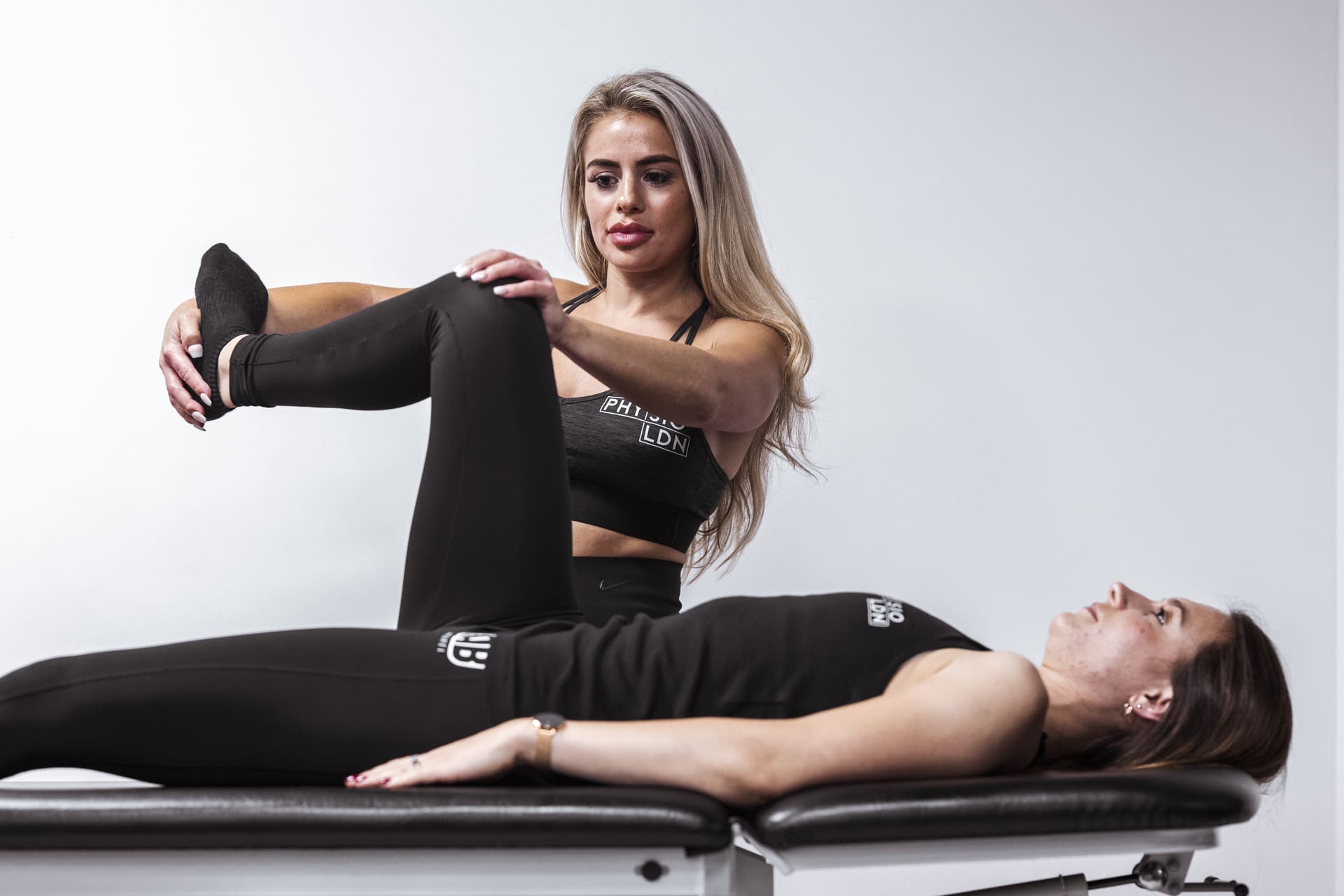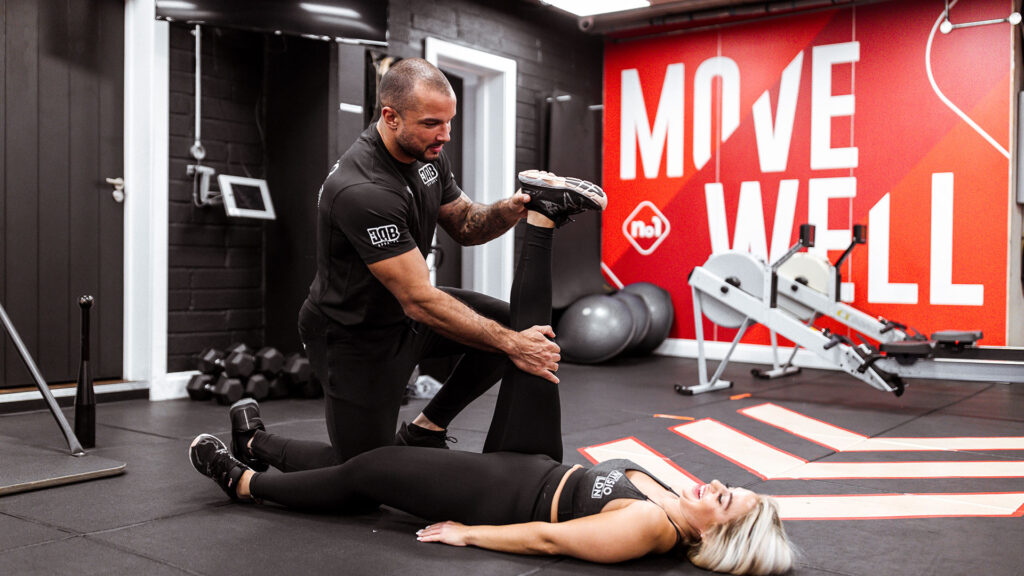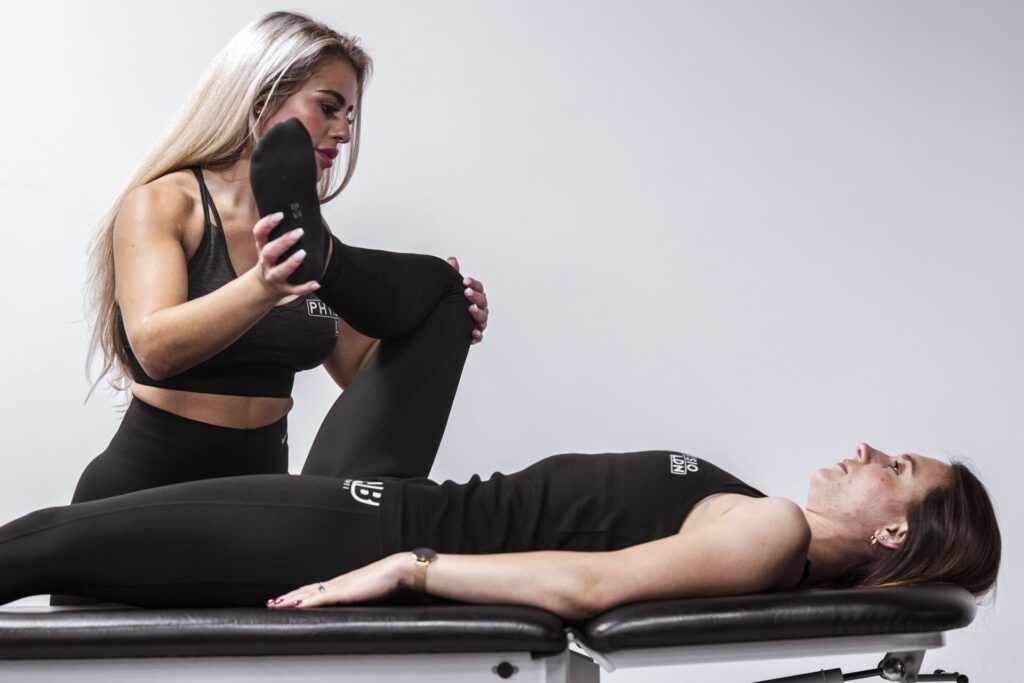Table of Contents
Main Takeaways
- Pain behind the knee can stem from Baker’s cysts, hamstring tendonitis, or ligament injuries.
- Physiotherapy combining exercise rehab and deep tissue massage is highly effective.
- Exercise improves function and quality of life in knee osteoarthritis.
- Seek immediate care for swelling, redness, or warmth, which may indicate serious conditions.
- A holistic approach—including weight control, diet, and mental health—supports recovery.
Knee pain is a common complaint that affects millions worldwide, with approximately 5% of all primary care visits in adults related to knee pain alone. Among the various types of knee discomfort, pain behind the knee can be particularly troubling due to its impact on mobility and daily activities. Understanding the causes, treatment options like kneef pain treatment in London, and when to seek professional help is essential for effective management and recovery.
This article explores the common causes of pain at the back of the knee, treatment strategies, and guidance on wthen to consult a healthcare provider. For those seeking expert physiotherapy in London, clinics like One Body LDN offer specialized care tailored to musculoskeletal conditions, including knee pain, combining deep tissue massage and exercise rehabilitation to promote lasting relief.
Common Causes of Pain at the Back of the Knee
Pain behind the knee can arise from various sources, ranging from minor injuries to chronic conditions. One frequent cause is a Baker’s cyst, a fluid-filled swelling that develops due to knee joint inflammation or arthritis. This cyst can cause tightness and discomfort, especially when bending or extending the knee. The presence of a Baker’s cyst often indicates underlying issues within the knee, such as meniscal tears or degenerative joint disease, which can complicate treatment and management.

Another common culprit is hamstring tendonitis or strain, where the tendons at the back of the thigh become inflamed or injured, leading to pain that radiates behind the knee. This condition is particularly prevalent among athletes who engage in activities that require sudden bursts of speed or intense physical exertion. Furthermore, inadequate warm-up routines or improper stretching techniques can increase the risk of hamstring injuries, making it essential for individuals to prioritize proper training regimens.
Additionally, ligament injuries, such as damage to the posterior cruciate ligament (PCL), may cause pain localized to this area. The PCL plays a vital role in stabilizing the knee, especially during activities that involve pivoting or sudden stops. Injuries to this ligament can occur during sports or accidents, and they often require a comprehensive rehabilitation program to restore function and strength to the knee joint.
Muscle imbalances and weakness around the knee joint can also contribute to discomfort. Research indicates that individuals with greater knee pain often exhibit more significant physical limitations due to muscle imbalances, particularly in cases of bilateral knee osteoarthritis. Such imbalances can increase stress on the joint, exacerbating pain and functional impairment. Strengthening exercises targeting the quadriceps, hamstrings, and calf muscles can help alleviate some of this discomfort by promoting better alignment and support for the knee.
Other less common causes include deep vein thrombosis (DVT), which is a medical emergency, and nerve entrapment syndromes. DVT occurs when a blood clot forms in a deep vein, often in the legs, and can lead to severe complications if not treated promptly. Symptoms may include swelling, redness, and warmth in the affected area, making it crucial to seek immediate medical attention. Given the variety of potential causes, a thorough assessment is crucial to identify the root of the pain and guide appropriate treatment.
Treatment and Recovery
Effective treatment of pain behind the knee depends on the underlying cause. Conservative management often begins with physiotherapy, which plays a pivotal role in restoring function and reducing pain. Expert knee pain physiotherapists in London, such as those at One Body LDN, utilize a combination of hands-on deep tissue massage, joint mobilizations, and tailored exercise programs to address both symptoms and contributing factors like muscle weakness and poor biomechanics.
Exercise therapy, in particular, has been shown to improve pain, physical function, and quality of life in individuals with knee osteoarthritis in the short term. A 2025 Cochrane review highlights that structured exercise regimens are probably effective for managing knee pain, emphasizing the importance of guided rehabilitation over passive treatments.
In some cases, knee braces may be recommended to provide joint support and offload stress from the affected area. However, as noted by Prakash Jayabalan, director of musculoskeletal research at the Shirley Ryan AbilityLab, patient comfort with braces can vary, with some finding them uncomfortable to wear despite their benefits.
For more comprehensive management, combining physiotherapy with lifestyle modifications, such as weight management and smoking cessation, can significantly reduce the risk of worsening knee pain, especially since factors like overweight status and smoking are known predictors of incident knee pain among workers. Nutrition also plays a crucial role in recovery; a balanced diet rich in anti-inflammatory foods, such as omega-3 fatty acids found in fish and nuts, can support joint health and alleviate pain.
Patients often experience chronic knee pain lasting many years; nearly 60% endure pain for five or more years, with 30% suffering for a decade or longer, underscoring the need for effective long-term strategies. Psychological factors, such as anxiety and depression, can also exacerbate the perception of pain, making it essential to address mental health alongside physical rehabilitation. Cognitive-behavioral therapy (CBT) has been shown to help patients develop coping strategies and improve their overall outlook on recovery.
For those interested in expert physiotherapy services in London, clinics like One Body LDN offer award-winning treatment at our physiotherapy clinic in London combining exercise rehab and deep tissue massage to fix knee pain and improve mobility. Additionally, they provide educational resources to empower patients, helping them understand their condition and the importance of adherence to treatment plans. This holistic approach not only aids in recovery but also fosters a proactive attitude towards long-term joint health.
When to See a Doctor
While many cases of pain behind the knee can be managed conservatively, certain signs and symptoms warrant prompt medical evaluation. Immediate consultation is essential if the pain is accompanied by swelling, redness, warmth, or sudden inability to bend the knee, as these may indicate serious conditions such as deep vein thrombosis or infection.

Persistent or worsening pain that does not improve with rest and physiotherapy over several weeks should also prompt a visit to a healthcare professional. Early diagnosis and intervention can prevent further joint damage and reduce the likelihood of invasive procedures later on. Dr. Brian Carr, an orthopedic surgeon, emphasizes that inadequate pain management in knee osteoarthritis can lead to more serious joint damage and increased social and mental burdens on patients.
Additionally, if knee pain is associated with a history of trauma, previous knee injuries, or if it significantly limits daily activities, professional assessment is recommended. A thorough clinical examination, imaging studies, and possibly referral to a specialist may be necessary to tailor an effective treatment plan.
For those seeking timely and expert care, London physiotherapy clinics such as One Body LDN provide same-day appointments and emergency physiotherapy services with a professional knee pain physiotherapist to address acute injuries and chronic conditions with evidence-based treatments. These clinics often employ a multidisciplinary approach, integrating physiotherapy with other therapeutic modalities such as acupuncture and massage therapy, ensuring a comprehensive treatment plan that addresses not only the symptoms but also the underlying causes of knee pain.
Moreover, understanding the importance of patient education cannot be overstated. Many clinics offer workshops and resources that empower patients with knowledge about their conditions, rehabilitation exercises, and lifestyle modifications that can significantly enhance recovery. This proactive approach not only aids in the healing process but also fosters a sense of control and confidence in managing one’s health, which is crucial for long-term well-being. Engaging in discussions about pain management options, including the use of assistive devices or modifications to daily activities, can also be beneficial in creating a tailored care plan that aligns with individual needs and goals. See our guide on knee pain bending.
FAQ
What causes pain behind the knee?
Pain behind the knee can be caused by a Baker’s cyst, hamstring tendonitis, ligament injuries, muscle imbalances, or less commonly, deep vein thrombosis or nerve issues. Identifying the exact cause requires a thorough assessment. A Baker’s cyst, for instance, is a fluid-filled sac that can develop when excess synovial fluid accumulates in the knee joint, often due to arthritis or injury. Similarly, hamstring tendonitis occurs when the tendons connecting the hamstring muscles to the knee become inflamed, typically due to overuse or strain. Understanding these underlying conditions can help in devising an effective treatment plan tailored to the individual’s needs.

How can physiotherapy help with knee pain?
Physiotherapy helps by addressing muscle imbalances, improving joint mobility, reducing pain through hands-on techniques, and prescribing tailored exercises to strengthen the knee and surrounding muscles, promoting long-term recovery. Techniques such as ultrasound therapy, electrical stimulation, and manual therapy can also be employed to alleviate pain and enhance circulation. Additionally, physiotherapists often educate patients on proper body mechanics and posture, which can prevent further injury and support overall knee health. This holistic approach not only targets the symptoms but also addresses the root causes of knee pain.
When should I see a doctor for knee pain behind the knee?
Seek medical attention if you experience swelling, redness, warmth, severe pain, sudden loss of knee function, or if pain persists despite conservative treatment. Early evaluation can prevent complications. It’s particularly important to consult a healthcare professional if you notice any signs of deep vein thrombosis, such as swelling in one leg, changes in skin color, or warmth in the affected area. These symptoms can indicate serious conditions that require immediate intervention. A timely diagnosis can lead to more effective treatment options and a quicker return to normal activities.
Are knee braces effective for pain behind the knee?
Knee braces can provide immediate relief by supporting the joint and reducing load, but comfort varies among patients. They are often used alongside physiotherapy and exercise for best results. Different types of braces, such as functional, rehabilitative, and prophylactic braces, serve various purposes, from stabilizing the knee during activity to aiding recovery after surgery. It’s essential to consult with a healthcare professional to determine the most suitable type of brace based on the specific condition and activity level, ensuring optimal support and comfort during the healing process.
How long does chronic knee pain usually last?
Chronic knee pain can last many years; research shows nearly 60% of patients experience pain for five or more years, and 30% for ten years or longer, highlighting the importance of effective management strategies. Factors such as age, activity level, and overall health can influence the duration and severity of knee pain. Chronic conditions like osteoarthritis can progressively worsen if not managed properly, making regular check-ups and adjustments to treatment plans crucial. Engaging in proactive measures, including weight management and consistent physical activity, can also play a significant role in alleviating symptoms and improving quality of life.
Can exercise improve knee pain?
Yes, studies indicate that exercise probably improves pain, physical function, and quality of life in the short term for people with knee osteoarthritis, making it a cornerstone of treatment. Low-impact activities such as swimming, cycling, and walking are particularly beneficial, as they strengthen the muscles around the knee without putting excessive strain on the joint. Additionally, incorporating flexibility and stretching exercises can enhance joint mobility and reduce stiffness. A well-rounded exercise program, ideally designed by a physiotherapist, can empower individuals to manage their knee pain effectively and maintain an active lifestyle.
Is private physiotherapy better than NHS for knee pain?
Private physiotherapy often offers shorter waiting times, longer sessions, and more personalized care compared to NHS services, which can lead to faster recovery and better outcomes for knee pain patients. In private settings, physiotherapists may have more flexibility to tailor treatment plans and use advanced techniques or technologies that may not be readily available in the NHS. This individualized approach can be particularly beneficial for those with complex conditions or specific rehabilitation goals, ensuring that patients receive the attention and resources they need to achieve optimal recovery.
Where can I find expert physiotherapy for knee pain in London?
Clinics like One Body LDN provide award-winning physiotherapy services in London, specializing in musculoskeletal conditions including knee pain, combining deep tissue massage and exercise rehabilitation for effective treatment. Their team of experienced physiotherapists employs a multi-faceted approach, integrating manual therapy, tailored exercise programs, and patient education to empower individuals in their recovery journey. Furthermore, many clinics offer additional services such as nutritional advice and lifestyle coaching, enhancing the overall treatment experience and supporting patients in achieving their health and wellness goals.
Start Your Journey to Pain-Free Knees with One Body LDN
If you’re struggling with pain behind the knee, don’t wait for your symptoms to worsen. One Body LDN is here to provide you with a free initial assessment and a precise diagnosis to kickstart your recovery. Our award-winning team of physiotherapists, including former athletes and NHS specialists, will create a customized treatment plan that blends exercise rehab and deep tissue massage, targeting the root cause of your knee pain. We’re committed to delivering results without overselling treatments, ensuring you receive only the best care. Whether you’re dealing with a sports injury or post-operative rehabilitation, our experts have the experience to handle it all. Book your free initial assessment at our clinic today and take the first step towards feeling amazing. Book your free initial assessment and experience the difference with One Body LDN.


